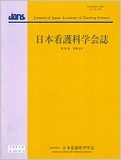Japanese
English
- 販売していません
- Abstract 文献概要
- 参考文献 Reference
要旨
目的:同じフィールドで実習している他大学薬学部学生とのクリニカルIPEを,看護学実習の一部に試行導入し,看護学生が認識するIPEの効果および課題を明らかにする.
方法:A大学看護学部学生のうちクリニカルIPEを体験した4年生12名,3年生28名を対象に無記名自記式質問紙調査(自由記載,RIPLS等)を実施し,実習の前後比較を行った.自由記載はBerelsonの内容分析法を用い,統計学分析の有意水準はp < .05とした.
結果:有効回答は4年生7名(58.3%),3年生は12名(42.9%)であった.各学年共に実習前後のRIPLS得点に有意差を認めなかった一方,4年生は専門職に求められる連携・協働の姿勢や態度を学び,3年生はIPEを通して他職種への障壁,緊張が緩和していた.課題として,学年に応じた実習目標の設定および実習方法の工夫等が示された.
結論:クリニカルIPEの一定の効果を確認した一方で,看護学生のレディネスに応じた運営上,指導上の課題が明らかになった.
Objective: Trial clinical interprofessional education (IPE) was introduced as part of the nursing practice for University A, involving joint clinical practice with pharmacy students at a different university. This study's objective was to identify IPE's effectiveness and issues as perceived by nursing students.
Method: Forty undergraduate students in University A's School of Nursing (third year, n = 28; fourth year, n = 12) completed an anonymous, self-administered questionnaire before and after the IPE. Surveys included free-response questions, the Readiness for Interprofessional Learning Scale (RIPLS), and goal attainment items. Free responses were examined using Berelson's protocol for content analysis. Quantitative items were compared between time points (significance: p < 0.05).
Results: Valid responses were received from 7 out of 12 fourth-year (58.3%) and 12 out of 28 (42.9%) third-year nursing students. Statistically significant changes in RIPLS scores after the practice were not observed for students in either year. However, fourth year students had gained professional attitudes for interprofessional work and cooperation. IPE relieved third year students' awareness of barriers and tensions to other professions. Issues identified by the survey included the need to (a) ensure that goals are set according to students' grade and (b) introduce modifications in practice methods.
Conclusion: This study showed IPE's effectiveness to a certain degree. Further, several issues with the program's operation and supervision were identified, requiring customization to suit nursing students' readiness to learn.
Copyright © 2019, Japan Academy of Nursing Science. All rights reserved.


